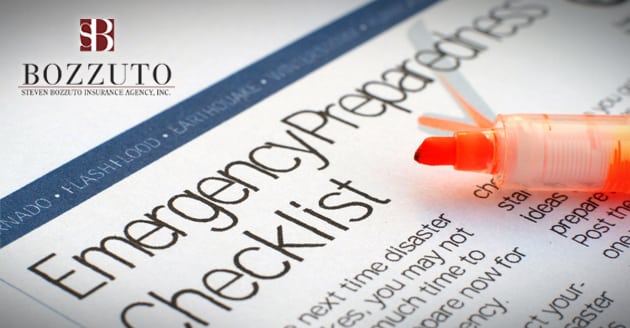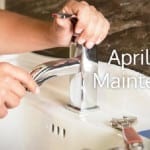Make a plan
The first step in creating an emergency plan is to think about what types of emergencies are most likely to occur where you live, such as earthquake, fire, flood or tsunami.
Check with your local authorities to see what the community warning signals are and what their recommended escape plans are.
Find the safest spots in your home depending on which type of emergency occurs. For example, during an earthquake, you’ll want to stop, drop and cover under a sturdy desk or table. For other earthquake information, check out the California Department of Conservation website.
Decide where to meet in case you are at home, away from home or your home is damaged.
Identify a family member or friend that lives out of the area that you can notify that everyone is safe.
Make sure your Homeowners Insurance policies cover any damage due to flooding or structural damage. If you’re not sure and live in California, please feel free to contact us or give us a call and we can make sure you have the right protection for your home.
Insurance Policies, documents and other records
Put together an emergency document holder for all of your important documents that you can grab very quickly. Your document policyholder should have:
- Medication list
- Homeowners Insurance policy information
- Birth certificates
- Copies of driver’s license
- Health Insurance information
- Immunization records
- Cash
- Pet immunization and records
- Emergency contact information
Alternatively, you can keep your documents safe by using an online system such as Google Drive, Evernote, or Carbonite. (There are numerous other websites that can keep your documents safe and a quick search will give you more options.)
Get prepared
As Benjamin Franklin said, “An ounce of prevention is worth a pound of cure.”
- Make a Survival Kit – One of the easiest things you can do is get a kit ready with everything you need in case of an emergency. You’ll want to have about 7-14 days worth of supplies along with first aid supplies. The American Red Cross is a great resource for putting together a survival kit.
- Smoke Detectors – make sure smoke detectors are installed and in working order in the hallways on each level of your home. We also suggest putting them in each bedroom.
- Fire extinguishers – Test and install fire extinguishers (according to manufacturer’s suggestions). It is especially important to have one accessible if there should be a kitchen fire. Remember: never use water to put out a kitchen fire!
- Carbon Monoxide alarms – Install at least one carbon monoxide alarm in your home, preferably in the hallway near the bedrooms.
- Secure your furniture – If you live in California, then you’ll probably experience an earthquake at some point. Make sure your furniture is securely fastened to the wall to avoid injuries from falling bookcases and shelves.
Talk with your family
Now that you know where you should go and what you’ll need, it’s important to talk with your family and make sure they know, too.
Do some practice drills to make sure that everyone understands what is expected of them and to correct any mistakes before a real emergency occurs.
FOLLOW US:





 What kind of insurance coverage does an auto repair shop need
What kind of insurance coverage does an auto repair shop need Am I eligible for California Good Driver Discount?
Am I eligible for California Good Driver Discount? Checklist for starting a contractor business in California
Checklist for starting a contractor business in California April Home Maintenance Checklist
April Home Maintenance Checklist What type of insurance does an apartment owner need?
What type of insurance does an apartment owner need?